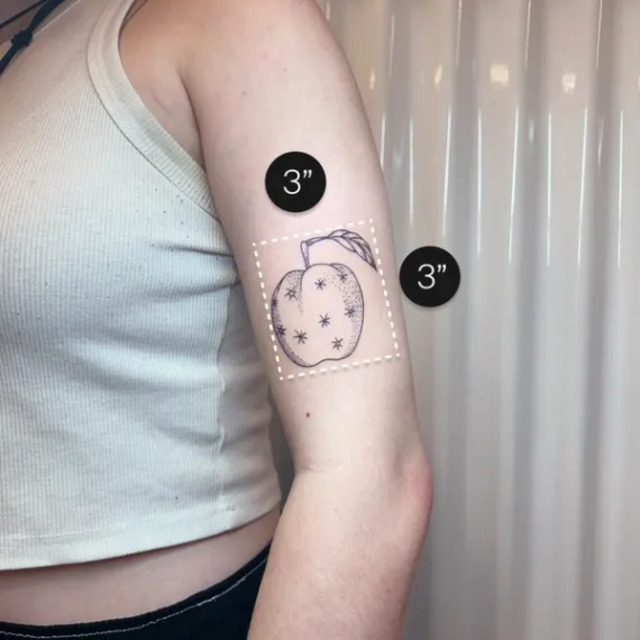Introduction
Removing a tattoo at home can be difficult but doable with the correct techniques and understanding. This thorough book addresses many at-home tattoo removal methods, their success, and safety issues. Whether your issue is a faded tattoo or an unwelcome design, this page will give you thorough knowledge to guide your choice.
Related Article: How Long Should I Keep My Tattoo Wrapped? Expert Advice Revealed
Evaluating the Feasibility of At-Home Tattoo Removal – Factors to Consider Before You Start
One should assess the viability of the procedure before starting the road of tattoo removal at home. The result can be greatly influenced by tattoo size, color, and age as well as by your skin type and sensitivity. Knowing these elements will enable you to decide the appropriate approach to use in your circumstances and create reasonable expectations.
Related Article: How Long Do Tattoos Take?
Size and Complexity of the Tattoo

The difficulty of removal of your tattoo is much influenced by its size and complexity. Usually, smaller, simpler designs fade more easily than more complex, big ones.
Colors and Ink Depth

Some colors black and dark blue, for example are simpler to remove than others like green, red, and yellow. The elimination method depends on the ink depth in your skin as well.
Skin Type and Sensitivity
At-home tattoo removal techniques’ safety and efficacy can be affected by your skin type and sensitivity. Sensitive skin people should choose milder methods to prevent damage and irritation.
Related Article: How to Become a Tattoo Artist – A Comprehensive Guide
Natural Remedies for Tattoo Removal – Exploring Home-Based Solutions
Those wishing to gently remove their tattoos are drawn to natural methods. These mild on the skin techniques usually need for easily obtained household items. To get obvious outcomes, though, they could call for greater time and consistency.
Lemon Juice and Salt Scrub – A Traditional Method for Gradual Tattoo Fading
Renowned for its bleaching qualities, lemon juice mixed with salt’s abrasive action can exfoliate the skin and gradually fade a tattoo.
- How to Apply: Mix equal parts lemon juice and salt to form a paste. Gently rub the mixture onto the tattooed area for about 30 minutes. Rinse thoroughly and moisturize.
- Frequency: Repeat this process 2-3 times a week for several months.
Aloe Vera and Vitamin E – Nourishing the Skin While Fading the Tattoo
Aloe vera, combined with vitamin E, can help nourish the skin and promote cell regeneration, aiding in the gradual fading of the tattoo.
- How to Apply: Extract fresh aloeVera gel and mix it with vitamin E oil. Apply the mixture to the tattooed area and leave it on for about 30 minutes. Rinse off with lukewarm water.
- Frequency: Use this method daily for the best results.
Honey and Yogurt Mixture – A Gentle and Soothing Approach to Lightening Tattoos
Honey and yogurt are gentle on the skin and can help lighten tattoos over time due to their natural bleaching properties.
- How to Apply: Mix equal parts honey and plain yogurt. Apply the mixture to the tattoo and leave it on for 30 minutes. Rinse with warm water.
- Frequency: Apply this mixture 2-3 times a week.
Over-the-Counter Solutions – Evaluating Topical Creams and Gels for Tattoo Removal
Several over-the-counter creams and gels claim to fade tattoos effectively. These products often contain active ingredients that penetrate the skin and break down the tattoo ink. It’s essential to choose reputable brands and follow the instructions carefully to avoid adverse reactions.
Tattoo Removal Creams – Ingredients, Effectiveness, and Application Tips
Tattoo removal creams often contain ingredients like trichloroacetic acid (TCA) and hydroquinone, which can help lighten tattoos by exfoliating the skin and reducing pigmentation.
- How to Apply: Follow the manufacturer’s instructions for application, typically involving applying the cream to the tattooed area and allowing it to absorb.
- Effectiveness: Results vary depending on the product and the tattoo’s characteristics. Consistent use over several months is often required.
Salicylic Acid Gels – How They Work and What to Expect
Salicylic acid gels are another option for at-home tattoo removal. This beta hydroxy acid helps exfoliate the skin and lighten the tattoo gradually.
- How to Apply: Apply the gel to the tattoo and allow it to dry. Follow the product’s instructions for the frequency of application.
- Effectiveness: Gradual fading over several months, depending on the tattoo and skin type.
Mechanical Exfoliation Techniques – Safe Practices for Using Exfoliation to Fade Tattoos
Mechanical exfoliation involves physically removing layers of skin to fade the tattoo. This can be done using abrasive materials or specialized devices. While effective, these methods require caution to avoid skin damage.
Baking Soda and Water Paste – A Simple Yet Effective Exfoliating Technique
Baking soda’s abrasive nature can help exfoliate the skin and lighten the tattoo over time when used in a paste form.
- How to Apply: Mix baking soda with water to form a thick paste. Gently rub the paste onto the tattooed area for 10-15 minutes. Rinse with warm water and moisturize.
- Frequency: Use this method 2-3 times a week.
Dermabrasion at Home – Understanding the Process and Safety Measures
Home dermabrasion involves using a dermabrasion device or abrasive materials to remove the top layers of skin. This method can be effective but requires caution to prevent skin damage and infection.
- How to Apply: Follow the instructions provided with the dermabrasion device. Typically, this involves gently exfoliating the tattooed area in a circular motion.
- Safety Measures: Ensure the device is clean and sterilized. Avoid over-exfoliating and follow up with a soothing moisturizer.
Chemical Peel Methods – Using Acid-Based Solutions to Lighten Tattoos
Chemical peels involve applying acid-based solutions to the skin to remove layers and lighten the tattoo. These methods can be effective but should be approached with caution due to the potential for skin irritation and damage.
Trichloroacetic Acid (TCA) Peels – Detailed Instructions and Precautions
TCA peels are a popular method for tattoo removal due to their ability to penetrate the skin and break down tattoo ink. However, they require careful application to avoid burns and scarring.
- How to Apply: Apply a thin layer of TCA solution to the tattooed area using a cotton swab. Allow it to dry and peel off naturally.
- Precautions: Conduct a patch test before full application. Use sunscreen and avoid sun exposure on the treated area.
Glycolic Acid Peels – A Milder Alternative for Tattoo Fading
Glycolic acid is a milder alternative to TCA and can be used for gradual tattoo fading. It works by exfoliating the top layers of skin and promoting cell turnover.
- How to Apply: Apply glycolic acid solution to the tattooed area and allow it to sit for the recommended time before rinsing off.
- Frequency: Use this method weekly and gradually increase frequency as tolerated.
The Role of Time and Patience – Managing Expectations for At-Home Tattoo Removal
Tattoos removed at home call for time and care. You have to control your expectations and realize that these methods might greatly lighten a tattoo rather than totally eliminate it.
Understanding the Timeline – How Long Does At-Home Tattoo Removal Take?
The procedure employed, the features of the tattoo, and your skin type will all affect the at-home tattoo removal timetable. Most techniques need constant use over several months to show appreciable effects.
Combining Methods for Better Results – Strategies for Enhancing Effectiveness
Combining many at-home tattoo removal techniques will increase potency. For a more complete treatment, for instance, combine over-the-counter lotions with natural therapies. Always be sure the combination techniques are safe for your skin type.
Conclusion
Eliminating a tattoo at home is a slow process that calls for careful study of several criteria and techniques. Although total elimination is not always possible, with persistence and consistency great fading is obtained. Safety and skin health must be given first priority all through the process.
Final Thoughts
See a professional if you’re not sure about the best course of action or if at-home solutions are not producing expected outcomes. Advanced treatments and advice catered to your particular requirement can be given by dermatologists and licenced tattoo removal experts. With the equipment and knowledge this thorough tutorial seeks to provide, you should be ready for at-home tattoo removal. Remember, the best results depend on consistency and patience, which also help to preserve skin health.
Read Also:
- 90+ Stunning Arm Tattoos for Men
- 30+ Attractive Side Neck Tattoos for Women
- 50+ Adorable Side Belly Tattoos for Girls
- 70+ Attractive Cousin Tattoo Ideas
- 80+ Astonishing Spine Tattoos for Females
- 90+ Eye Catching Cat Tattoos Design Ideas
- 50+ Spectacular Hunting Tattoos
- 40+ Unique Sobriety Tattoos for Guys
- 50+ Astonishing Back Tattoos for Men
- Who is Bad Bunny? Take a Look at Bad Bunny Tattoos

